Editor’s note: Former Chronicle foreign correspondent Max Frost is still doing international journalism, but now it’s for RocaNews, the Internet news organization he founded with two partners in August 2020. In January Max and Roca writer Alex Norris spent 2.5 weeks in Ethiopia. They’re back in the U.S. now, but Max is writing daily reports of the trip in the RocaNews letter. It’s free. Go to rocanews.com to sign up. (Max is the son of The Chronicle’s Mark Frost and Sandra Hutchinson and brother of Zander.)
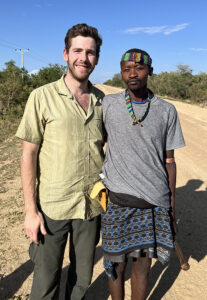
“We will get malaria this summer.”
That’s what a member of the Kara tribe, which lives on the banks of the Omo River in southern Ethiopia, told us.
“Every person gets malaria every summer,” one Kara man told us. To prevent it, the government gives out mosquito nets every few years. “But then they forget about us.”
Occasionally, mobile clinics, operated by foreign aid groups, will drop by and treat those who have malaria. Still, the Kara man said, some percentage of children die every summer.
But, he added, malaria isn’t the major concern in these parts. Yellow fever, another mosquito-born illness, is.
“If you get yellow fever, you die,” that same man said.
Statistically, that’s not true. According to the CDC, “Most people infected with yellow fever virus do not get sick or have only mild symptoms.”
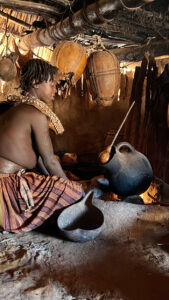
But in remote places like the Omo Valley, you don’t know you have it until you’re extremely sick, and by that point, it is often fatal, whereas malaria is typically deadly only for children, yellow fever can be deadly for anyone
There is a yellow fever vaccine, and we received it in the U.S. before going to Ethiopia. But a dose costs hundreds of dollars, and as far as people in rural Ethiopia know, it doesn’t exist.
Mosquito-borne illnesses are the downside of living near a river, as the Kara do. But there are many benefits.
Other tribes have to walk miles for water, struggle to grow crops, and rarely eat protein. The Kara have to just walk down a hill to fill their buckets, though, and they’ve turned the riverbanks into farms and have a steady flow of fish to eat.
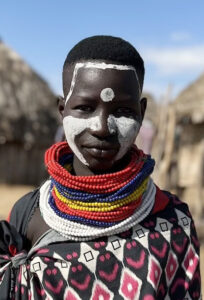
We met one AK-47 toting Kara man who said he was a hunter. He showed us his gun, which he said he bought in South Sudan, the war-torn country 100 miles from where we were. The writing on the weapon was in Hebrew, indicating the gun had originated in Israel.
Like the other tribes, the Kara live in huts with log walls and thatched roofs. They’re famous for their appearance: Body paint, patterned robes, colorful necklaces.
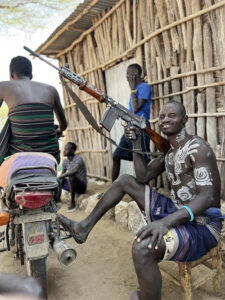
The Kara village was the first tribal village we had visited that had a school. That may be because of what’s happening nearby.
A short distance upriver from the village was a new factory, which we were told was built to process sugar being harvested from a new plantation. Sugar farming requires a lot of water.
The locals told us that the Omo river is shrinking, and they attribute that to the factory’s water usage and hotter temperatures. People we talked to said the factory is a mixed blessing: It’s created jobs, but they worry about its impact on the river. If the ecosystem is destroyed, their way of life would be too.
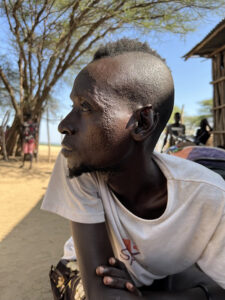
Some locals and international rights workers say the projects have resulted in tribal people being pushed off their land, and that they threaten wildlife and water sources. Locals told us there used to be far more animals, but factory construction has caused them to migrate to other countries.
The government and those who defend the projects say they are bringing jobs, electricity and investment to an extremely poor area.
While the government and its critics would argue intensely over that, many locals seemed to think it was too soon to know if it was good or bad.
On the way out of the Kara village, we got out of the car near another isolated spot by the river. A man was fishing in the middle of the water; a woman was cleaning her clothes on the bank; another man was tending his goats while they drank out of the river.
Crocodiles were on the prowl, but no one was bothered. Our guide gestured to be quiet and pointed off to the left: Maybe 200 feet away, a crocodile was peeking his head out of the water. Seconds later, he disappeared.
Crocodiles are dangerous, but the people in the water were unfazed. Their lives revolve around the river. Not even a crocodile will stop them from going in.
Copyright © 2023 Lone Oak Publishing Co., Inc. All Rights Reserved
 Glens Falls Chronicle Serving the Glens Falls/Lake George region; Warren, Washington and northern Saratoga counties since 1980
Glens Falls Chronicle Serving the Glens Falls/Lake George region; Warren, Washington and northern Saratoga counties since 1980


